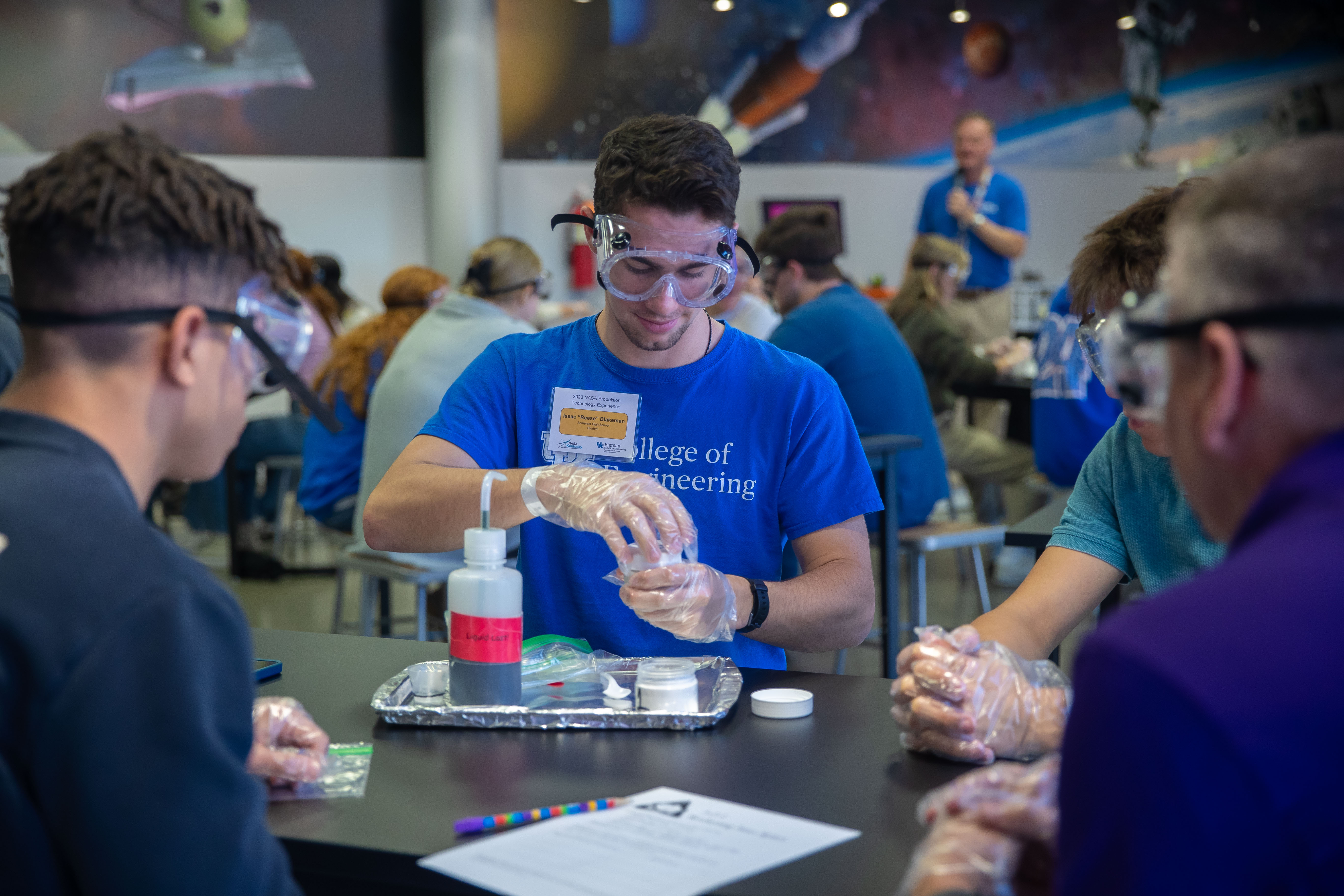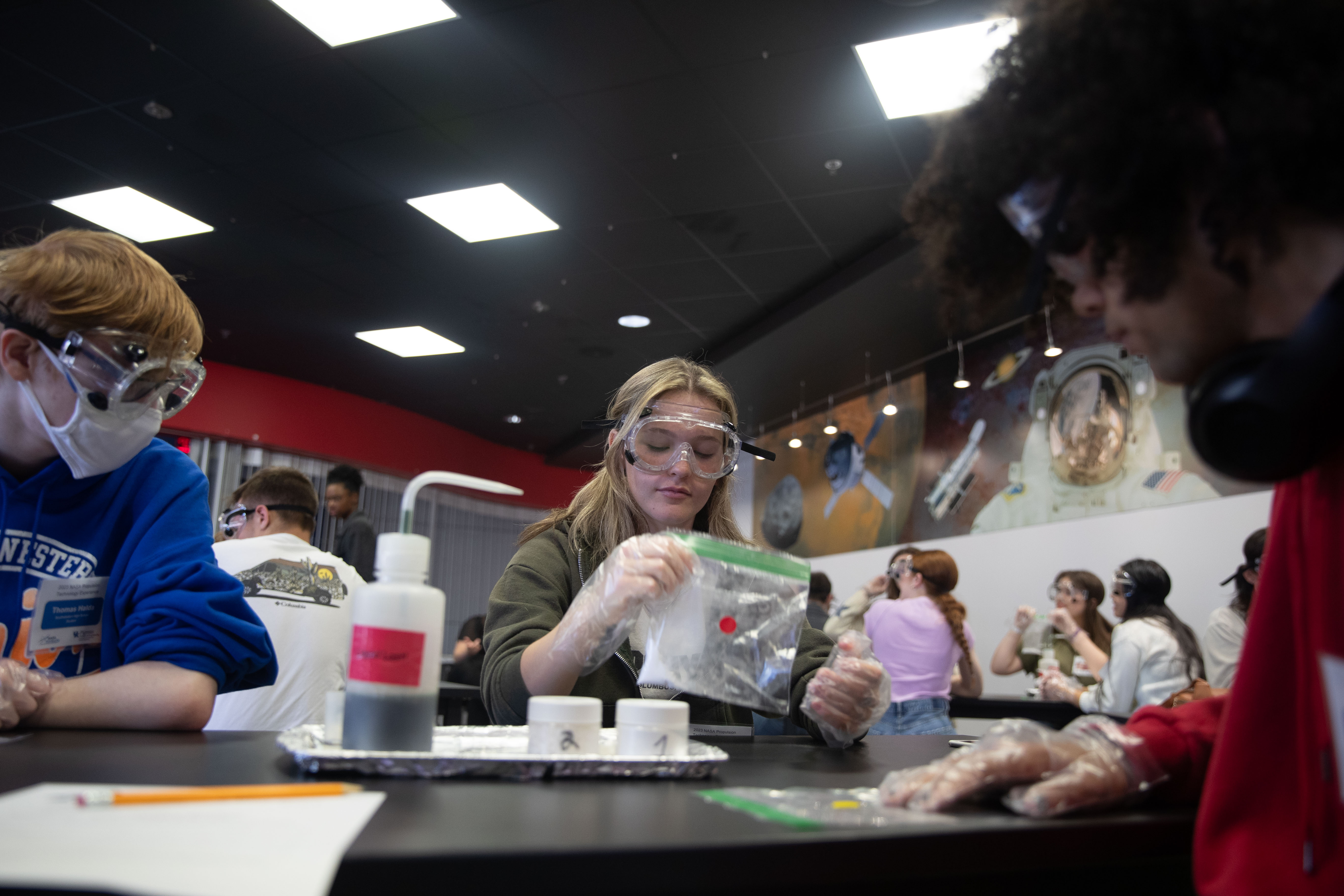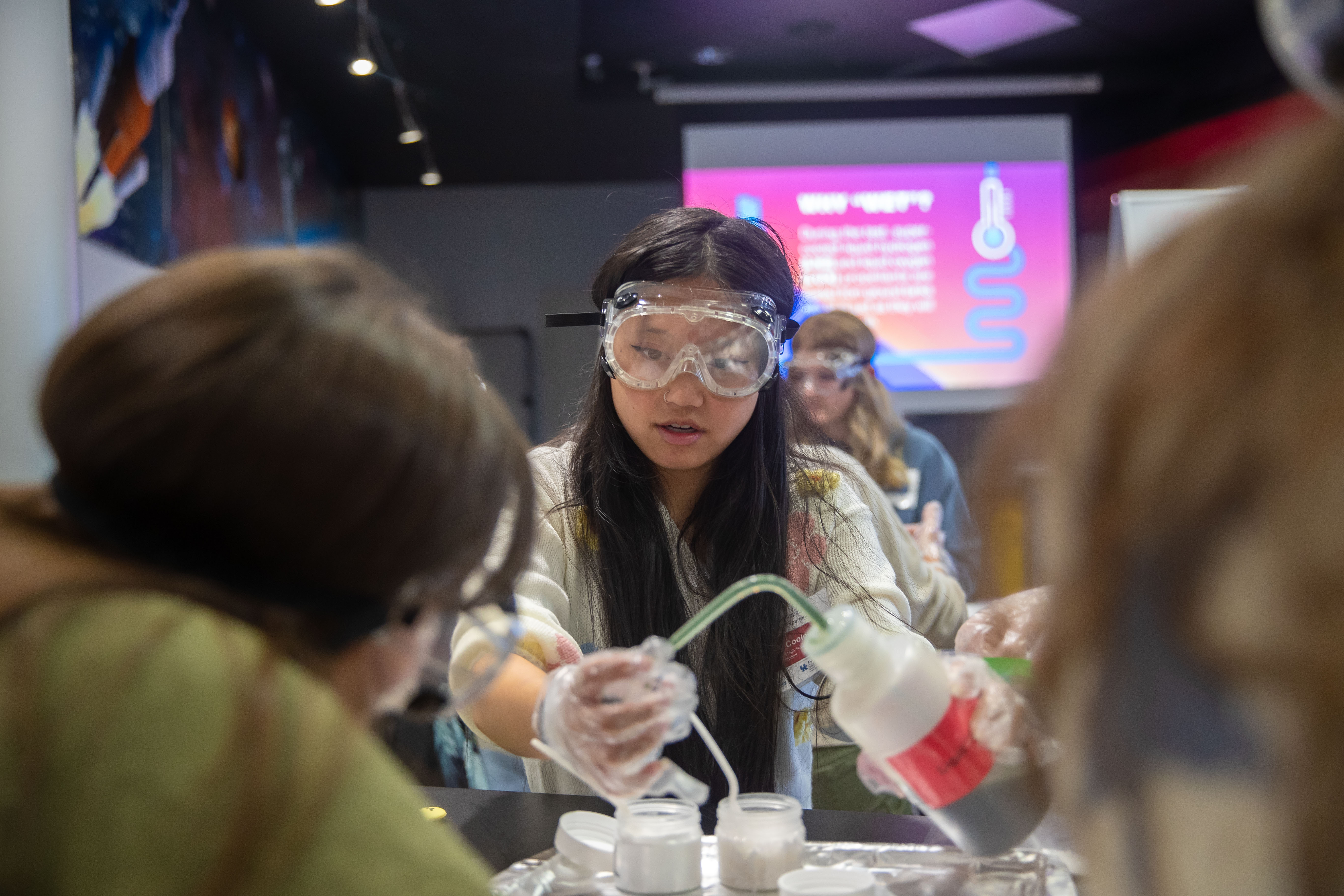On Nov. 6 and 7, high school students and chaperones from Pike, Johnson, Floyd, Fayette, Knox, Bell and Pulaski counties traveled to Huntsville, Alabama, alongside Pigman College of Engineering faculty and staff to visit the NASA Marshall Space Flight Center and U.S. Space & Rocket Center as part of the NASA Propulsion Technology Outreach Program.
The program was a collaborative effort between the College, NASA Kentucky and L. Stanley Pigman’s Lighthouse Beacon Foundation. Thirty-four juniors and seniors were selected based on transcript evaluation, teacher recommendation and quality of the essay they were tasked to write based on their interests in STEM fields.
The two-day trip started at the NASA Marshall Space Flight Center where students received exclusive tours of the National Center for Additive Manufacturing, Environmental Control and Life Support Systems and the Marshall Test Lab / Environmental Test Lab. After tours concluded, students joined UK North Alabama Alumni Association President and SimTech CEO/President Annie Saylor (mathematics M.A. and Ph.D., ’74 and ’79, respectively), for a banquet and networking opportunity. SimTech provided financial support for this evening portion and speakers who shared with students about their professional experiences in STEM. On day two, students received guided tours and participated in lab activities at the U.S. Space & Rocket Center.
Tours and education on both days included UK Engineering Alumni currently working for NASA:
o Michael Shadoan, ‘87 BSME, ‘90 MSME
o Matthew Marsh, ‘84 BSME, ‘87 MSME
o Ray Shaughnessy, ‘85 BSMNG
o Kate Dewitt Estes
This trip was the first of its kind and was dreamed up by Scott Stephens, a professor in the Department of Mechanical and Aerospace Engineering. Stephens, a first-generation college graduate from eastern Kentucky himself, wanted to develop an outreach program for underrepresented Kentucky high school students interested in STEM fields.
Stephens’ first call was to Shadoan, who served as his NASA partner on the development of the program. Shadoan set up the NASA lab and facility tours for group. Once a plan was established, Stephens wrote a proposal, which was approved for funding, by NASA Kentucky. NASA Kentucky’s funding would have allowed for 10 to 15 high school students to participate but knowing Stanley Pigman’s passion for providing outreach programs to high school students in eastern Kentucky, Stephens thought he might have an interest in helping to expand the opportunity to include more high school students from the area. To no surprise, when presented with the idea, Pigman was enthused to help.
"When Dr. Stephens contacted us about this unique opportunity to promote not only the college, but STEM fields to students across eastern Kentucky, Karen and I were eager to join the effort," Pigman said. "I am a product of eastern Kentucky and promoting this college and STEM education has always been a personal mission of mine. Being able to provide this opportunity to students and also participate alongside them was incredibly fulfilling."
After securing funding and the necessary support from NASA, Stephens recruited Jennifer Ellis, an academic advisor in the Department of Mechanical and Aerospace Engineering and Madison Vogt, a graduate student in the department, to help him internally in planning and executing the program.
An important part of the planning process for Stephens and his team was identifying and connecting with alumni and engineers who were also from eastern Kentucky. Stephens tasked himself and his team to not only provide an opportunity for high school students living in the same region he grew up in himself, but to find professionals in the field that these students could relate to on a broader personal level.
“I wanted the students to meet engineers, scientists, technicians, and others in STEM fields who have the same background as they do – who were born and raised in the same part of the Commonwealth with the same advantages and disadvantages and were able to achieve their dreams and goals in the aerospace industry,” Stephens said.
Stephens also believed that showing high school students eastern Kentucky representation within NASA was a powerful statement in and of itself.
“NASA represents to most of the country, the very top of that industry and is a national treasure. I hope that in visiting NASA laboratories, manufacturing facilities, and mostly the people that began just like them, the students will aspire to reach for dreams of their own in the STEM fields.”















